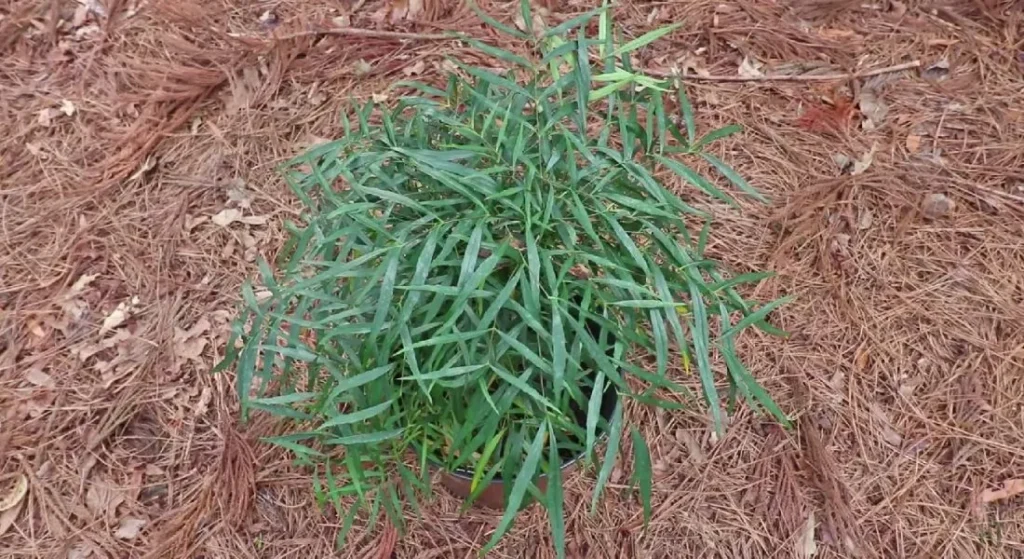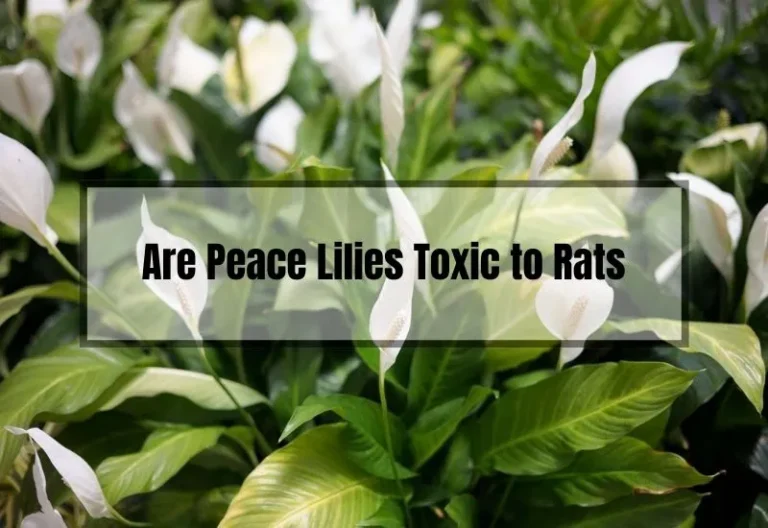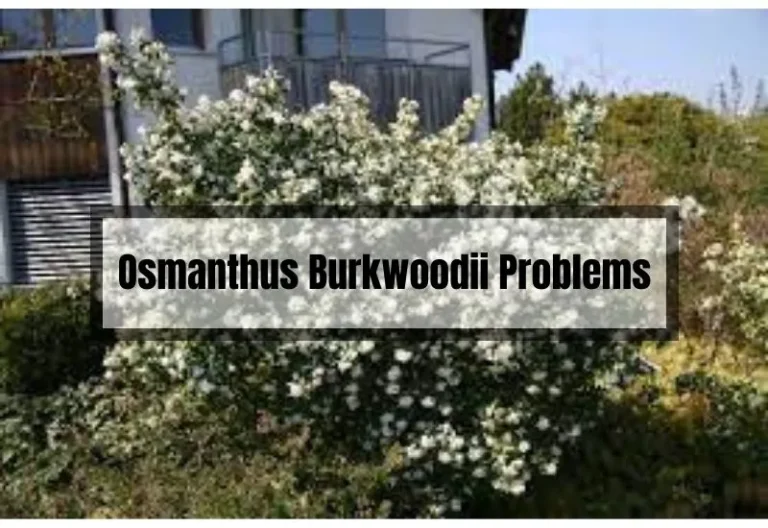Mahonia Soft Caress Problems: How to Prevent and Solve Them
Are you having trouble with your Mahonia Soft Caress plant? This evergreen shrub is a popular choice for gardeners because of its attractive foliage and low maintenance. However, like any plant, it can be susceptible to problems. In this article, we will explore some common Mahonia Soft Caress problems and provide tips on how to prevent and solve them.
One of the main culprits behind Mahonia Soft Caress problems is improper watering. Overwatering or underwatering can cause the foliage to curl and turn brown.
Another issue that can occur is leaf scorch, which can happen when the plant is exposed to too much sun or wind, resulting in unsightly yellow or brown blemishes on the leaves. But don’t worry, there are steps you can take to keep your Mahonia Soft Caress healthy and thriving.
Key Takeaways
- Mahonia Soft Caress is a popular choice for gardeners because of its attractive foliage and low maintenance.
- Improper watering is a common cause of Mahonia Soft Caress problems, such as curling and browning of the foliage or leaf scorch.
- Preventing Mahonia Soft Caress problems involves proper watering, planting in the right location, and regular maintenance.

Mahonia Soft Caress Problems
If you’re a fan of Mahonia Soft Caress, you know how beautiful and unique this plant can be. But like all plants, it’s not immune to problems.
Here are some common Mahonia Soft Caress problems you might encounter, and what you can do to solve them.
Signs of Problems
Here are some signs that your Mahonia Soft Caress might be having problems:
- Curling or browning leaves: This can be caused by drought or overwatering.
- Yellow or brown blemishes on leaves: This could be a sign of leaf scorch, which can occur if the plant is exposed to too much sun or wind.
- Wilting or drooping leaves: This could be a sign of root rot, which can be caused by overwatering or poor drainage.
- Stunted growth: This could be a sign of nutrient deficiencies, such as a lack of nitrogen, phosphorus, or potassium.
Common Diseases
Here are some common diseases that can affect Mahonia Soft Caress:
- Powdery mildew: This fungal disease can cause a white, powdery coating on the leaves, stems, and flowers. It’s often caused by high humidity or poor air circulation.
- Leaf spot: This fungal disease can cause brown or black spots on the leaves, which can eventually lead to leaf drop. It’s often caused by wet conditions or poor air circulation.
- Rust: This fungal disease can cause orange or yellow spots on the leaves, which can eventually lead to leaf drop. It’s often caused by wet conditions or poor air circulation.
Pest Issues
Here are some common pests that can affect Mahonia Soft Caress:
- Scale insects: These small, oval-shaped insects can attach themselves to the leaves and stems, sucking sap from the plant and causing yellowing or wilting.
- Spider mites: These tiny pests can cause yellowing or browning of the leaves, as well as a fine webbing on the plant.
- Mealybugs: These small, white insects can attach themselves to the leaves and stems, sucking sap from the plant and causing yellowing or wilting.
To prevent and solve these problems, it’s important to keep your Mahonia Soft Caress healthy and well-maintained. Make sure it’s planted in well-draining soil, and water it deeply but infrequently.
Provide good air circulation and avoid overcrowding. Fertilize regularly with a balanced fertilizer, and prune as needed to maintain its shape and size. With proper care, your Mahonia Soft Caress can thrive and bring beauty to your garden for years to come.
Preventing Problems
Proper Plant Care
To prevent problems with your Mahonia Soft Caress, it’s important to provide proper plant care. This includes:
- Watering: Mahonia Soft Caress is sensitive to both drought and overwatering. It’s important to water your plant regularly, but not too much. Aim to keep the soil moist, but not waterlogged.
- Light: Mahonia Soft Caress prefers partial shade, especially during the hottest part of the day. Too much direct sunlight can scorch the leaves and cause browning.
- Soil: Mahonia Soft Caress prefers well-draining soil that is rich in organic matter. If your soil is heavy or clay-like, consider adding compost or other organic matter to improve drainage.
- Fertilizer: Mahonia Soft Caress is a slow-growing plant and doesn’t require much fertilizer. However, you can apply a slow-release fertilizer in the spring to encourage healthy growth.
Preventive Measures
In addition to proper plant care, there are some preventive measures you can take to avoid problems with your Mahonia Soft Caress:
- Pest Control: Keep an eye out for pests like aphids, spider mites, and scale insects. These pests can cause damage to the leaves and weaken the plant. Use insecticidal soap or neem oil to control infestations.
- Pruning: Regular pruning can help keep your Mahonia Soft Caress healthy and prevent overgrowth. Prune in the spring after flowering to remove any dead or damaged branches.
- Mulch: Applying a layer of mulch around the base of your Mahonia Soft Caress can help retain moisture in the soil and prevent weeds from growing. Use a natural mulch like bark chips or compost.
By following these proper plant care and preventive measures, you can keep your Mahonia Soft Caress healthy and free from problems. With a little bit of attention and care, your Mahonia Soft Caress can thrive and add beauty to your garden.
Solving Problems
If you are experiencing problems with your Mahonia Soft Caress, don’t worry! There are a few treatment options available to help nurse your plant back to health.
Treatment Options
First, it’s important to identify the problem. If your plant is suffering from leaf curl, it may be due to drought or overwatering. To fix this, make sure your plant is getting the right amount of water.
You can also add mulch to help retain moisture in the soil. If you notice leaf scorch, it could be due to too much sun or wind. Try moving your plant to a shadier location or adding a windbreak to protect it from the elements.
If your plant is suffering from pests or diseases, there are a few different treatment options available. You can try using insecticidal soap or neem oil to get rid of pests like aphids or spider mites. For diseases like powdery mildew, you can use a fungicide spray to help control the spread. Be sure to follow the instructions carefully and use protective gear when applying any chemicals to your plant.
Recovery Process
Once you’ve identified the problem and started treatment, it’s important to monitor your plant closely. Keep an eye out for any new symptoms or changes in your plant’s health. If you notice any new problems, adjust your treatment approach accordingly.
In general, it may take some time for your plant to recover from any problems it’s experiencing. Be patient and continue to provide your plant with the care it needs to thrive. This may include regular watering, fertilizing, and pruning as needed.
With the right care and attention, your Mahonia Soft Caress can recover from any problems it’s experiencing and continue to thrive in your garden.
Other Related Mahonia Soft Caress Concerns
Apart from the issues I’ve already mentioned, there are other potential problems you might encounter, like pests, diseases, or poor soil conditions. But hey, we’re in this together, so let’s tackle them one by one!
Dealing with Pests and Diseases
Aphids, scale insects, and spider mites are some of the common pests that can attack your Mahonia Soft Caress. To keep these pesky critters at bay, consider using insecticidal soap, neem oil, or other appropriate treatments.
As for diseases, root rot and fungal infections can be a problem. Preventing these issues comes down to proper watering and good air circulation around the plant.
If you do spot signs of disease, it’s important to act quickly and apply the appropriate treatments, such as fungicides, to halt the spread.
Ensuring the Right Soil Conditions
When it comes to soil, Mahonia Soft Caress isn’t too picky, but it does appreciate well-draining soil. Nobody likes wet feet, right? Ensure your plant has the right soil conditions to thrive by checking the drainage and making amendments if necessary.
Proper soil pH and nutrient balance also play a role in keeping your plant healthy and vibrant. So, don’t hesitate to test your soil and make adjustments as needed.
Mahonia Soft Caress Care

If you’re looking for a plant that is low maintenance and can thrive in various conditions, the Mahonia Soft Caress is a perfect choice. However, like all plants, it requires proper care and attention to keep it healthy and beautiful. Here are some tips to help you care for your Mahonia Soft Caress:
Soil
The Mahonia Soft Caress prefers well-drained soil that is slightly acidic. You can use a soil mix that is designed for acid-loving plants or mix your soil with peat moss. Avoid planting it in heavy clay soil or soil that is prone to waterlogging.
Watering
The Mahonia Soft Caress is drought tolerant, but it still needs regular watering, especially during the first year after planting. Water your plant deeply once a week during the growing season. In winter, reduce watering to once a month.
Fertilizing
Fertilize your Mahonia Soft Caress in spring and fall with a slow-release fertilizer designed for acid-loving plants. You can also add compost or well-rotted manure to the soil in spring to provide additional nutrients.
Pruning
Prune your Mahonia Soft Caress in late winter or early spring before new growth appears. Remove any dead, damaged, or diseased branches. You can also shape your plant at this time by cutting back any overly long or wayward branches.
Sunlight
The Mahonia Soft Caress prefers partial shade to full shade. It can tolerate some sun, but too much sun can cause the leaves to scorch. If you’re planting your Mahonia Soft Caress in a sunny location, make sure it gets some shade during the hottest part of the day.
Pests and Diseases
The Mahonia Soft Caress is relatively pest and disease resistant. However, it can be susceptible to spider mites and scale insects. Keep an eye out for any signs of infestation and treat promptly with insecticidal soap or neem oil.
By following these simple care tips, you can keep your Mahonia Soft Caress healthy and beautiful for years to come.
Frequently Asked Questions (FAQs)
How often should I water my Mahonia Soft Caress?
The ideal watering schedule for Mahonia Soft Caress will depend on the weather conditions and the moisture levels in the soil. A moisture meter can be a helpful tool for determining when it’s time to water. Just remember to strike a balance between overwatering and underwatering to keep your plant happy.
How much sunlight does Mahonia Soft Caress need?
Mahonia Soft Caress does well in partial shade to full sun, but be cautious of excessive sunlight, especially in hot climates, as it may cause leaf scorch. Providing some shade during the hottest part of the day can help protect your plant from sun damage.
What type of soil is best for Mahonia Soft Caress?
Mahonia Soft Caress prefers well-draining soil. Ensure your plant has the right soil conditions by checking the drainage and making amendments if necessary. Also, pay attention to the soil pH and nutrient balance for optimal plant health.
Can I grow Mahonia Soft Caress in a container?
Absolutely! Mahonia Soft Caress can be grown in a container, just make sure you choose a pot with adequate drainage holes and use well-draining soil. Regularly check the moisture levels and adjust your watering schedule accordingly to keep your potted Mahonia Soft Caress thriving.
How can I protect my Mahonia Soft Caress from harsh winds?
To protect your Mahonia Soft Caress from strong winds, consider planting it in a sheltered location or using windbreaks like fencing or other taller plants to shield it. This will help prevent wind damage and reduce the risk of leaf scorch.
Conclusion
So, there you have it, my green-thumbed friends! I’ve shared some tips on how to prevent and solve common Mahonia Soft Caress problems. Armed with this knowledge, you’re now ready to tackle any issues that might arise, keeping your plant looking fabulous and healthy.
Remember, a well-cared-for Mahonia Soft Caress is not only a stunning addition to your garden but also a testament to your gardening prowess. Go forth and let your Mahonia Soft Caress shine!






